vRealize - Whats New October 2021
Overview
This week VMware are announcing new features in the vRealize suite products. Most of the vRealize Suite products went GA with their 8.5 version in August, but since many of the vRealize products release cycle is now at monthly releases, both for the SaaS and the On-prem version we'll be getting an 8.6 version pretty soon.
During VMworld week the following updates are announced, some are visions and strategies others are actual new features:
I'll be updating this blog post with official links to the announcements with more technical details when they are available
VMware Cloud Management Strategy
First let's take a quick look at VMware's Cloud Management Strategy
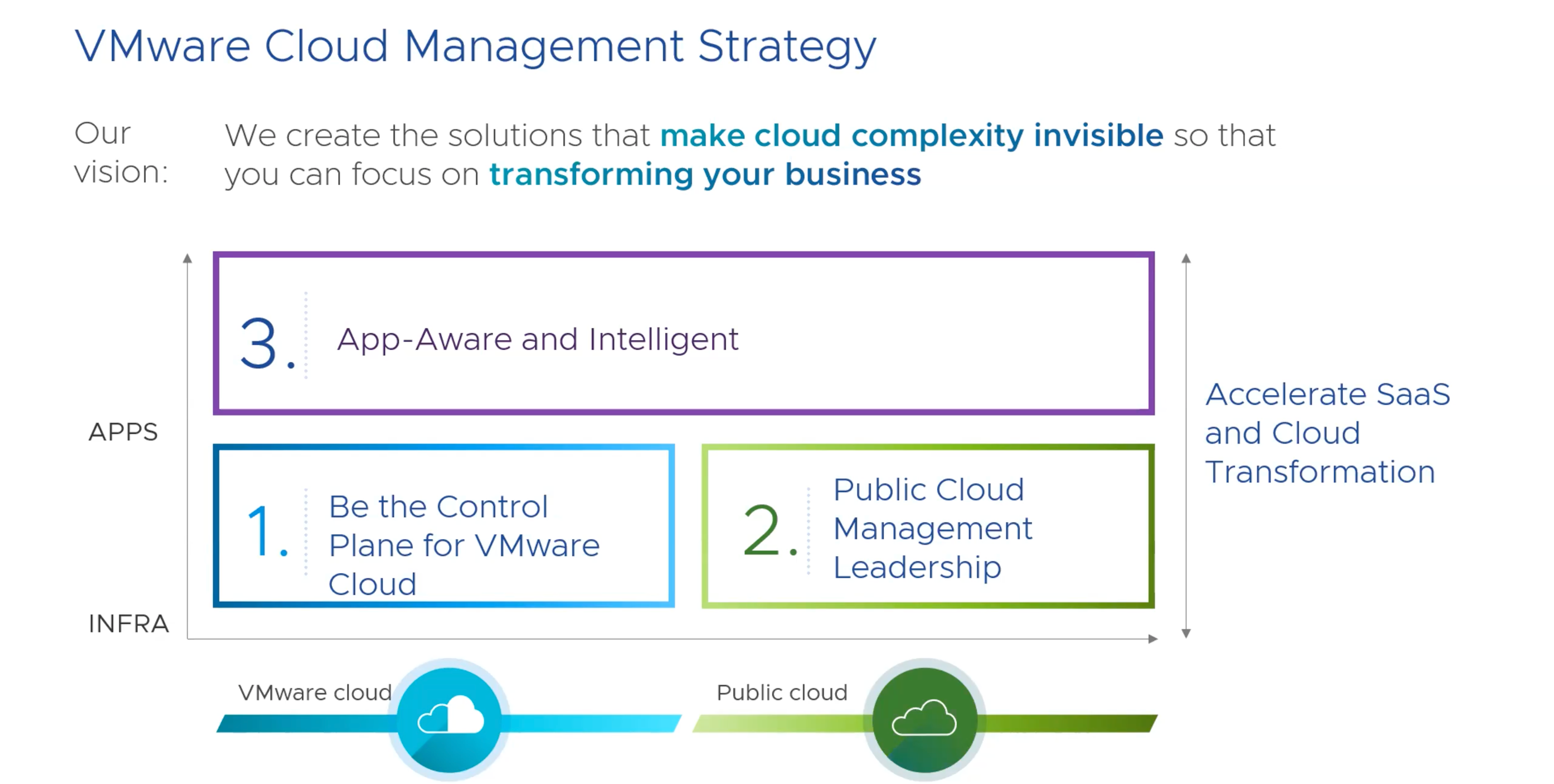
VMware's vision in this space is to "...create solutions that make cloud complexity invisible so that you can focus on transforming your business"
This is broken down to three different areas. Two conserning the Infrastructure side of things where VMware wants to be the Control plane for all VMware clouds (be it on-prem or one of the VMware offerings in a public cloud) and be the leader in Public Cloud Management.
The first is kind of self explanatory was my initial thought and I didn't really see why this was high up on the agenda, but thinking about it there are so many automation tools and frameworks out there that integrates and automates vSphere platforms so with that in mind I really can see that this should still be a huge focus area for VMware.
The second area, Public cloud management, is a natural extension of the first area. We all want to manage and automate things with as little effort as possible and being able to do so with the same tooling and in the same platform would help achieve that.
The third area conserns the applications running on the infrastructure we manage, and going back to the second area I just mentioned, the need for ease of use applies also here.
In a few words VMware recognizes the need for a set of tools that can manage "everything" and wants to deliver on that, and what they're introducing now is the VMware Cloud Operating Model
VMware Cloud Operating Model
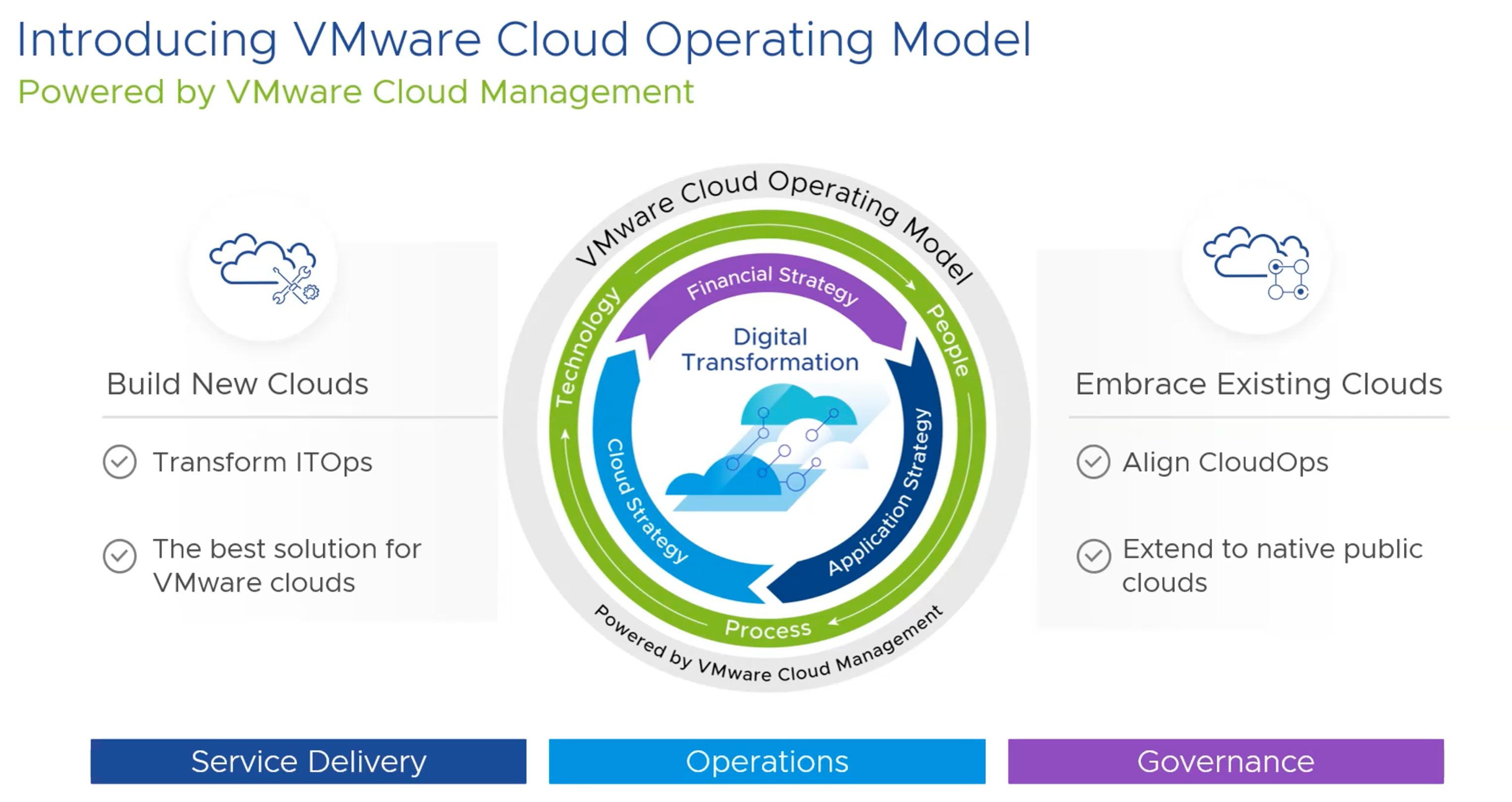
This is kind of a mix of transformations, mindsets, tools and strategies. All of it "powered by" Cloud Management delivered by VMware. The whole idea is to allow an IT department to be more of an orchestrator of IT services focusing on the application and delivery of those, than the racking and stacking of infrastructure. With VMware Cloud Foundation as a key platform be it on-premises or through a public cloud offering the idea is to operationalize the IT infrastructure in a way that it can be consumed in an easy way and through the UI or process the user wants.
Read more in this VMware blog
vRealize Cloud Management
So what does "powered by Cloud Management" mean?
vRealize Cloud Management is not a product, it's more a set of products. It's a collection of the vRealize suite products traditionally installed on-prem, the cloud offerings of the vRealize products and CloudHealth.
Delivering on the VMware control plane strategy the ability to now manage all VMware cloud offerings will be available both with vRealize on-prem and SaaS tools. The new additions include ability to manage Microsoft Azure VMware solutions, Google Cloud VMware Engine and Oracle Cloud VMware solution.
Furthermore we will also be able to extend management in to all major public clouds, AWS, Azure and GCP, for both monitoring, provisioning, self-service consumption and end-to-end network visibility.
Again, there's not one product delivering all of this, it's the combination of them.
vRealize Cloud Universal
Last year VMware introduced VMware vRealize Cloud Universal (vRCU) that is a collection of the SaaS version of the vRealize suite products. With vRCU we can deploy the tools both on-premises or consume it as a SaaS, and move workloads between, all with a single subscription model (i.e. license).
This fall the Enterprise Plus edition will include vRealize Network Insight Cloud
Project Ensemble
A new announcement this week is Project Ensemble
This is a new data service that normalizes data from multiple different (vRealize) data points into a single view. The vision is to integrate all the vRealize tools whom again are connected to various clouds and infrastructure and Ensemble will use Machine learning to deliver application centric insights to the user.
Ensemble will not be a replacement for the different vRealize tools, it will just be a layer on top and will use in-context switching to vRealize for deeper insights and troubleshooting
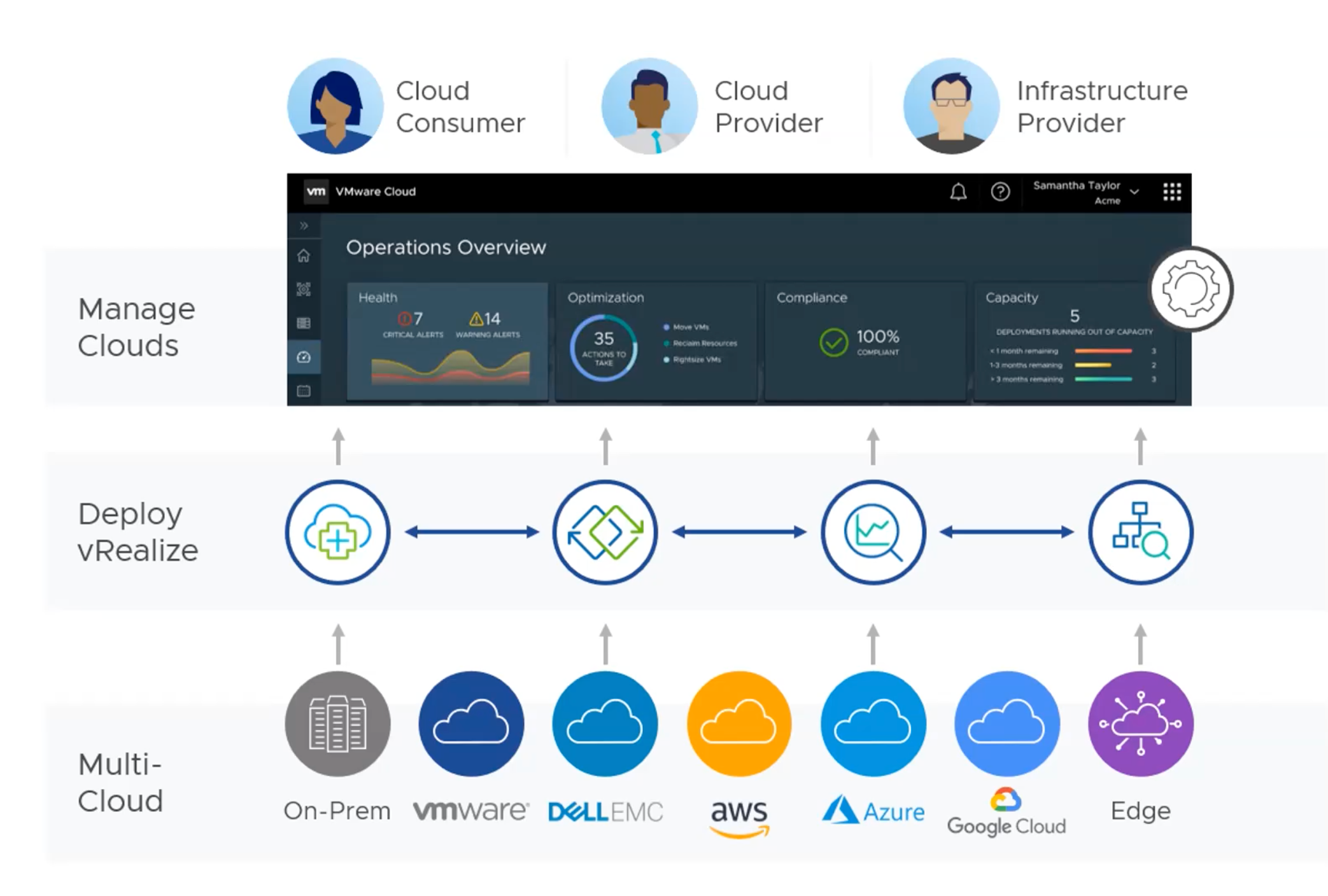
The first use-case will support VMware Cloud on AWS
vRealize Automation
vRA 8.5 was recently released. Through .x updates to 8.5 and a new 8.6 version coming up VMware will add a bunch of new features with this new release (note that a few of these have already been available through vRA Cloud):
New and updated Features (blog)
- Leverage Azure Provisioning capabilities
- Cloud Resource Center for management of all discovered, onboarded and provisioned deployments
- Deploy custom resources with ABX
- Workspace support in Code Stream will support Kubernetes
- Machine tags in VMC
- New roles in the product
- vSphere network onboarding
- Native SaltStack Configuration capabilities via modules for vSphere, VMC and NSX
- VCD adapter
- Puppet enterprise support for machines withouth Public IP addresses
- vRO Dynamic inputs in Cloud Templates
I've highlighted the features I'm especially excited about and will elaborate a bit on those
Custom resources with ABX
Up until now we've had to use vRO to deploy custom resources which in turn needed to be built with dynamic types to allow for full lifecycle management.
With this new feature we will be able to provision custom resouces through ABX actions, with Day 2 operations enabled through resource actions, without the need for dynamic types.
vRO dynamic inputs in Cloud Templates
This will allow us to use vRO Actions as a source for input values directly in a Cloud Template.
Up until now we had to use this through Custom Forms in Service Broker, but now it's available directly in the Cloud Templates it self.
Kubernetes workspaces in Code Stream
With Code stream we've had to use a standalone Docker host for running a CI task in a container. Now we will be able to integrate with any conformant Kubernetes cluster which is a great addition.
The integration allows to use an existing K8S namespace or create a new one, we can choose between nodeport or loadbalancer service for access and also specify a Persistent volume claim for storage.
Cloud Resource Center
The Resource view will let us manage and perform Day 2 operations on resources in both discovered, onboarded and provisioned deployments. Pretty cool, and with this feature a machine doesn't have to be provisioned by, or onboarded, to vRA for management.
Native SaltStack configuration modules
In 8.4.1 the ability to use the saltConfiguration property in a Cloud Template allowed for easier installation of the Salt minion and state files during deployment. That feature was not available for Windows VMs, but that's included now which is great news
SaltStack and the open-source Salt modules brings a whole new set of possibilities that previously required Software components in vRA 7.x or custom vRO workflows.
vRealize Operations
For vROps we also got a 8.5 release a few weeks ago. In the upcoming 8.6 release we'll see a few new features, but as before some of these are already available or will first be available in the Cloud/SaaS version.
This release will align to the areas mentioned in the Cloud Strategy section above. I'll briefly touch upon a few of the new features
New and updated Features (blog)
VMware Cloud control plane
We will have full support for VMware Cloud on AWS, Azure VMware Service, Google Cloud VMware Engine and VMware Cloud on Dell for the on-prem version.
There's also an enhanced integration with vRA for provisioned resources, as well as support for vSAN Mesh.
This release will also see enhancements in Certificate Store Monitoring. It'll keep up with certificates for native management packs as well as products through the SDDC Health monitoring. These can now also create alerts and notifications so you won't have to log in to check for expiring certificates.
In this release we've also getting a Sustainability "Dashboards" view. This will be all about highlighting an organization's sustainability efforts and can help identifying idle resources to help save resources
All True Visibility Suite for Compute and Storage management packs will now be available in all editions of vROps at the next release of the Management packs. This is a nice addition to the product!
Public Cloud
This release will deliver monitoring for almost all AWS services including custom metrics in the on-prem version. For Azure and GCP there's enhancements to the monitoring capabilities, but not full support just yet.
There's also a whole new Overview view for each Public cloud which looks quite nice
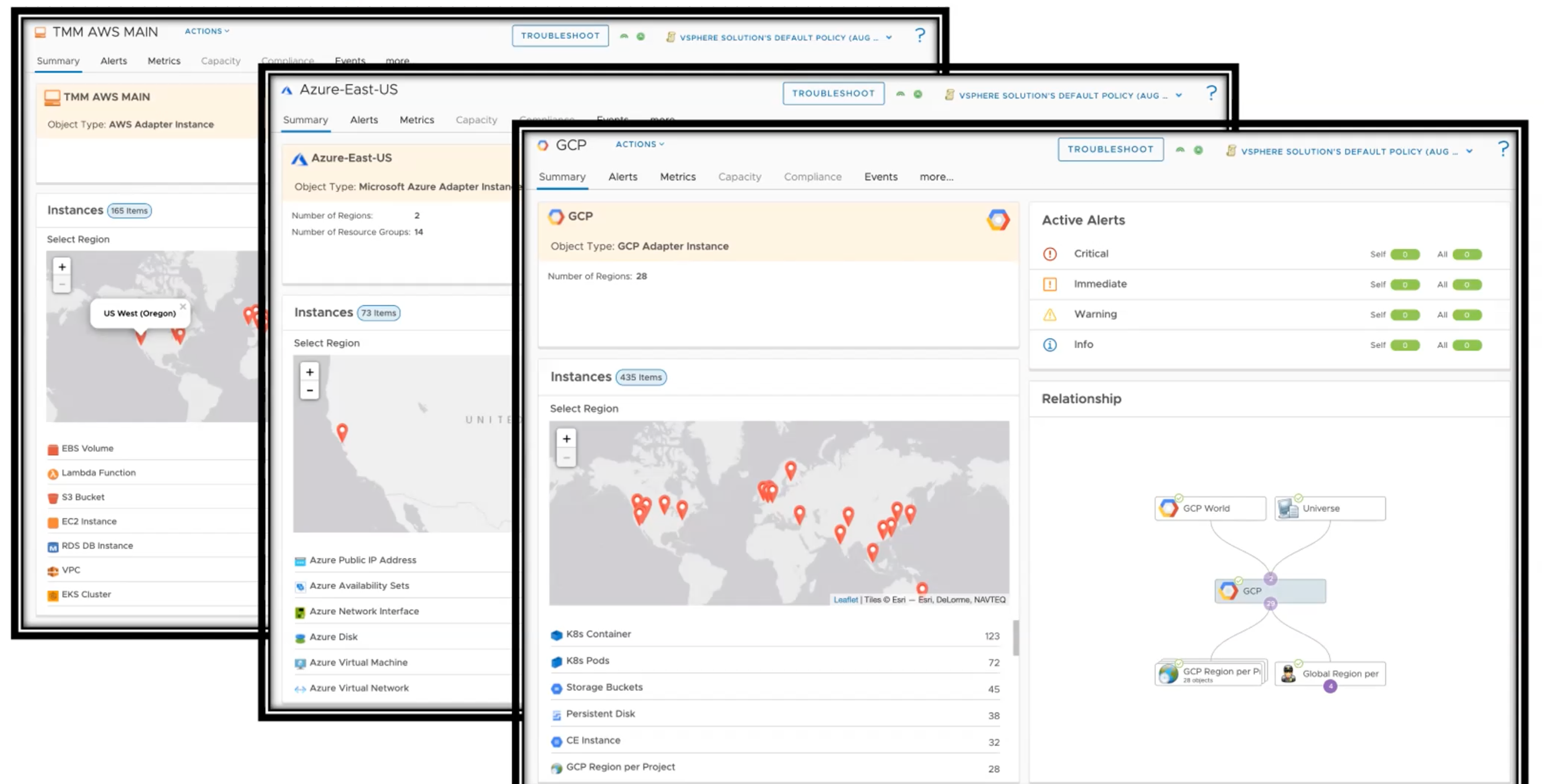
One huge area when talking about Public Cloud is cost and this release will see an integration with CloudHealth for multi-cloud cost governance
There's also a new Cost Overview UI that brings an overview into both on-prem and public cloud offerings, as well as links to more detailed dashboards
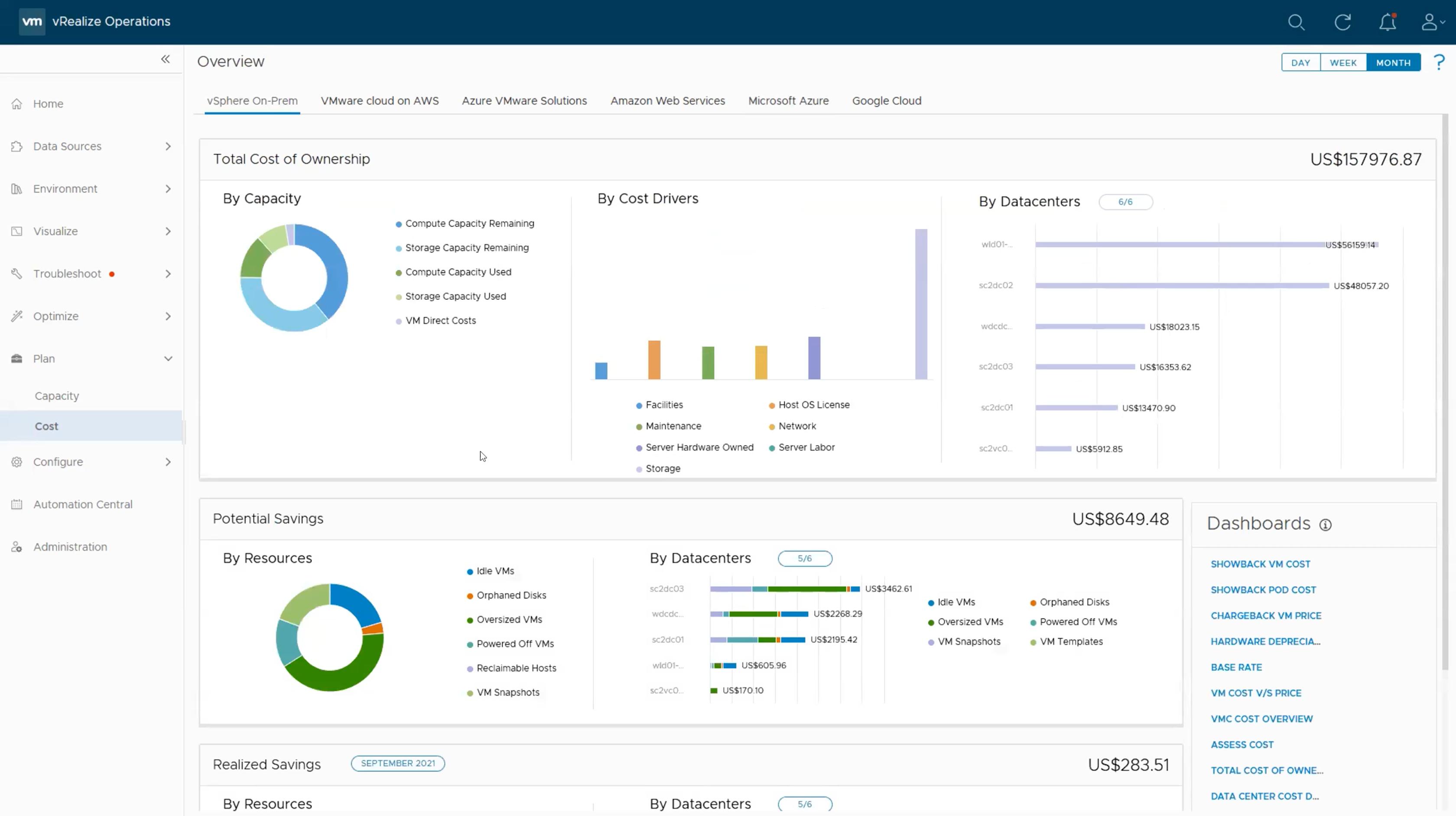
App Awareness
This release will deliver full support for the open-source Telegraf agent in vROps on-prem which first came in the cloud version aligned with 8.4. The current on-prem version only supports a small list of applications through the curated Telegraf agent. Now we'll get a full list of 200+ applications that the Telegraf open-source agent supports. I'm looking forward to see this in action!
This release will also see integrations with Datadog, Dynatrace, App Dynamics and New Relic for the on-prem version.
There will be an enhanced app definition and modeling of apps and workflows. The Kubernetes management pack also gets some updates
Reimagined experience
The biggest update in this version is a huge revamp of the user experience. The whole idea is a simplified UI with in-product guides and end-to-end visualizations
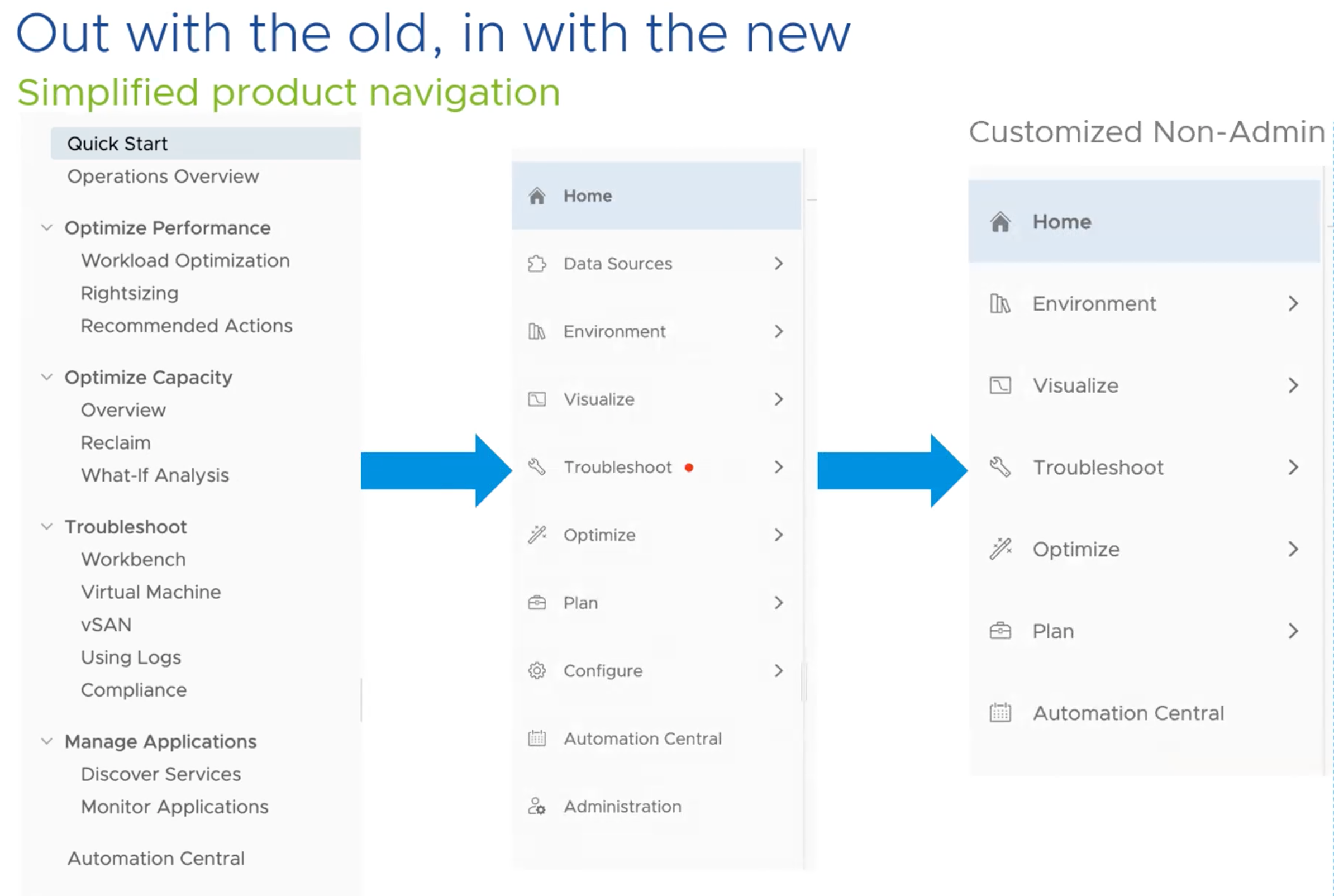
As the screen shot above shows, the Menu is new, and more importantly it's customizable.
For both Dashboards and Views we can add things to favorites and also pin stuff in the Recent items. A small but much appreciated addition
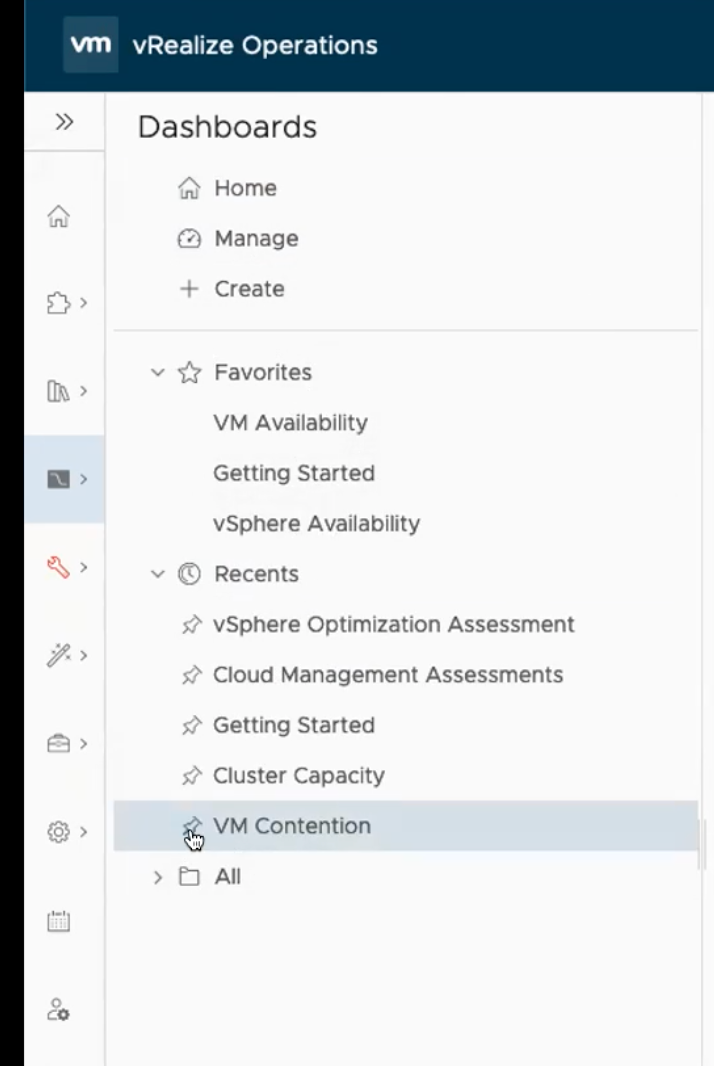
Another nice addtion is the ability to create custom groups with Regular expression criterias.
For Email notifications there's a whole new way to create customizable email alert notification templates
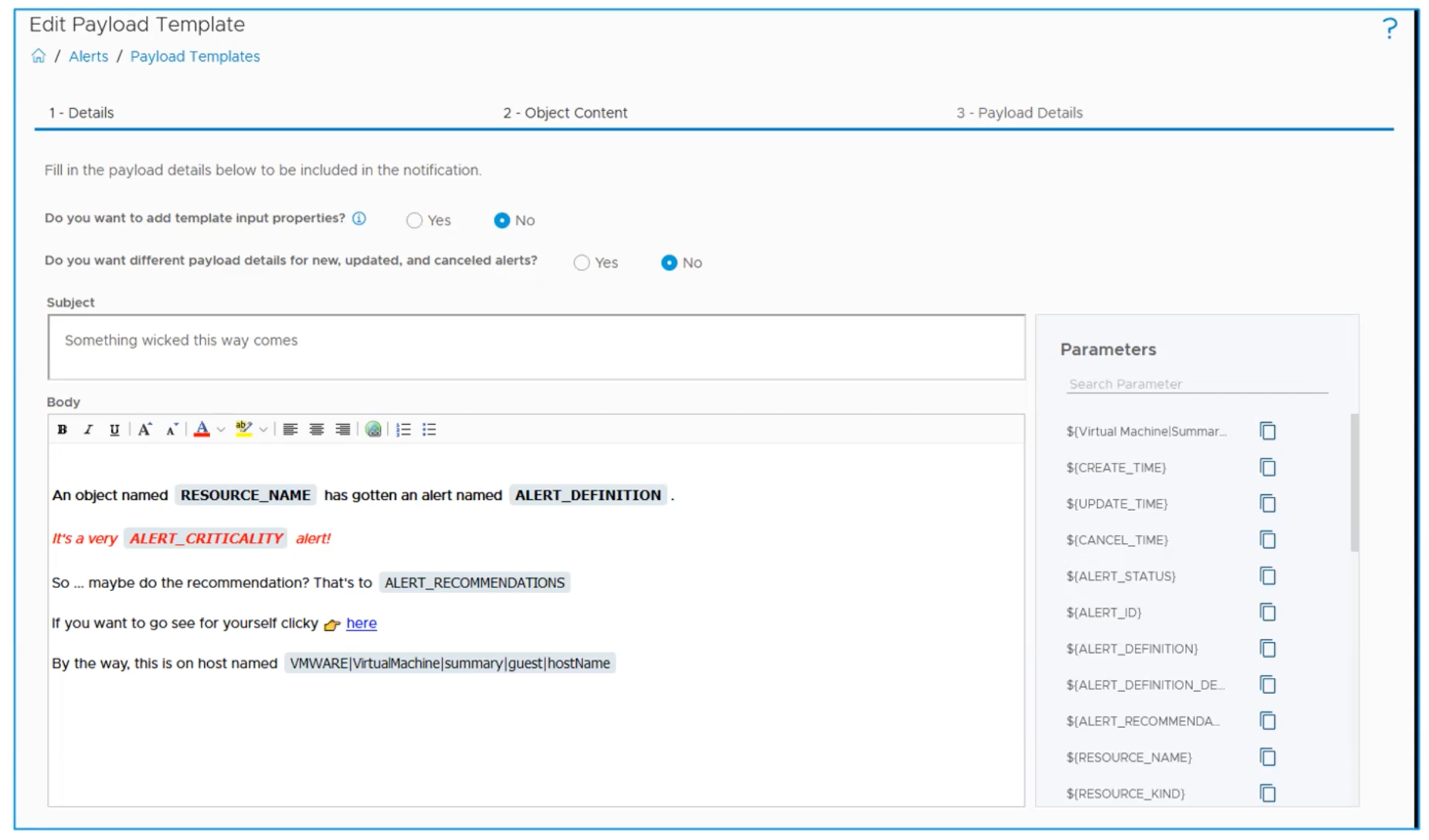
vRealize Log Insight
Log Insight will also come in a 8.6 version with the following new features (again a few of these are already available in vRLI Cloud):
- NSX Identity Firewall (IDFW) integration (i.e. User to IP mapping)
- Role Based Access control
- Alert Management with better User experience and extracted fields
- Enhanced System notifications with native Slack webhook and email notifications
- Hybrid Log Management across VMware Cloud and public clouds
In vRLI Cloud
- Data at scale (petabyte)
- Simplified buying experience/onboarding
- Log Root Cause Analysis
Summary
A bunch of new features are coming to the vRealize products (hence the lengthy blog post) and there's quite a lot to take in. I for one can't wait to get access to the products to start testing it out for real
Update: A summary blog on vRealize news can be found here
Thanks for reading!